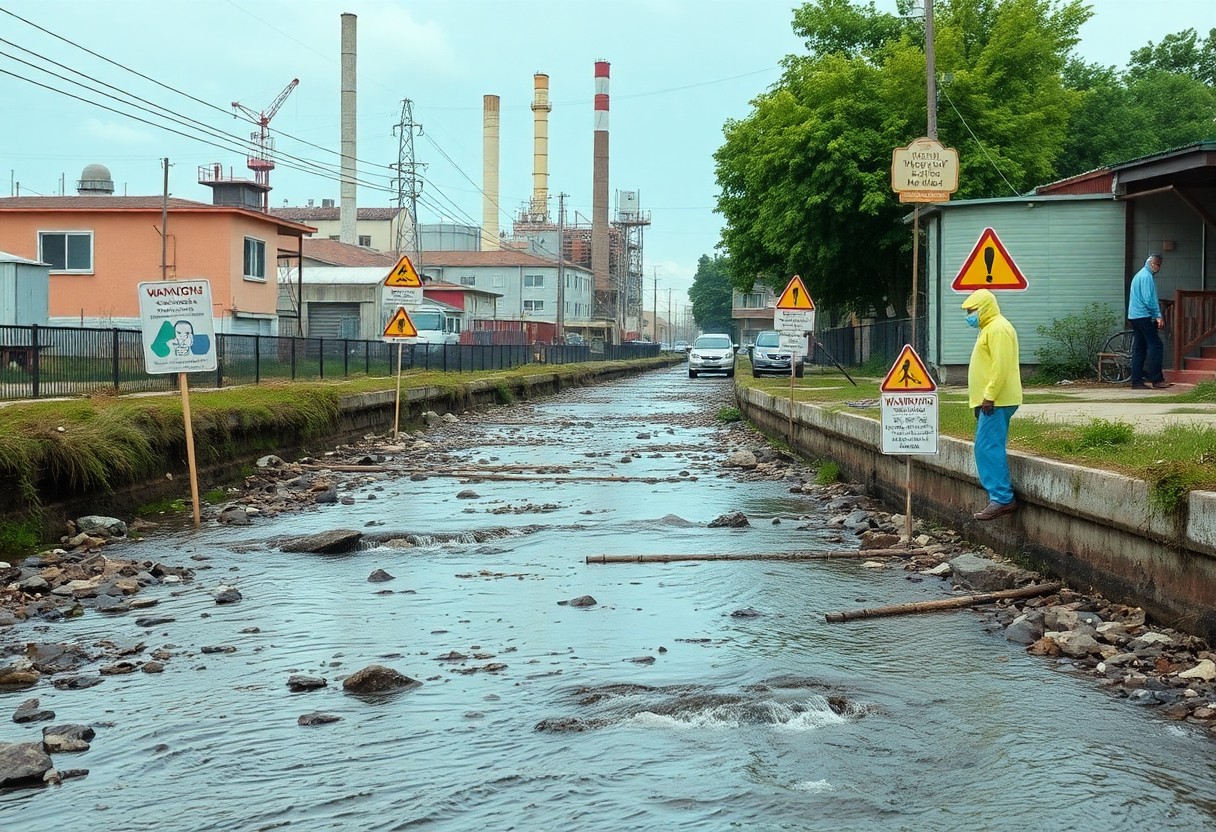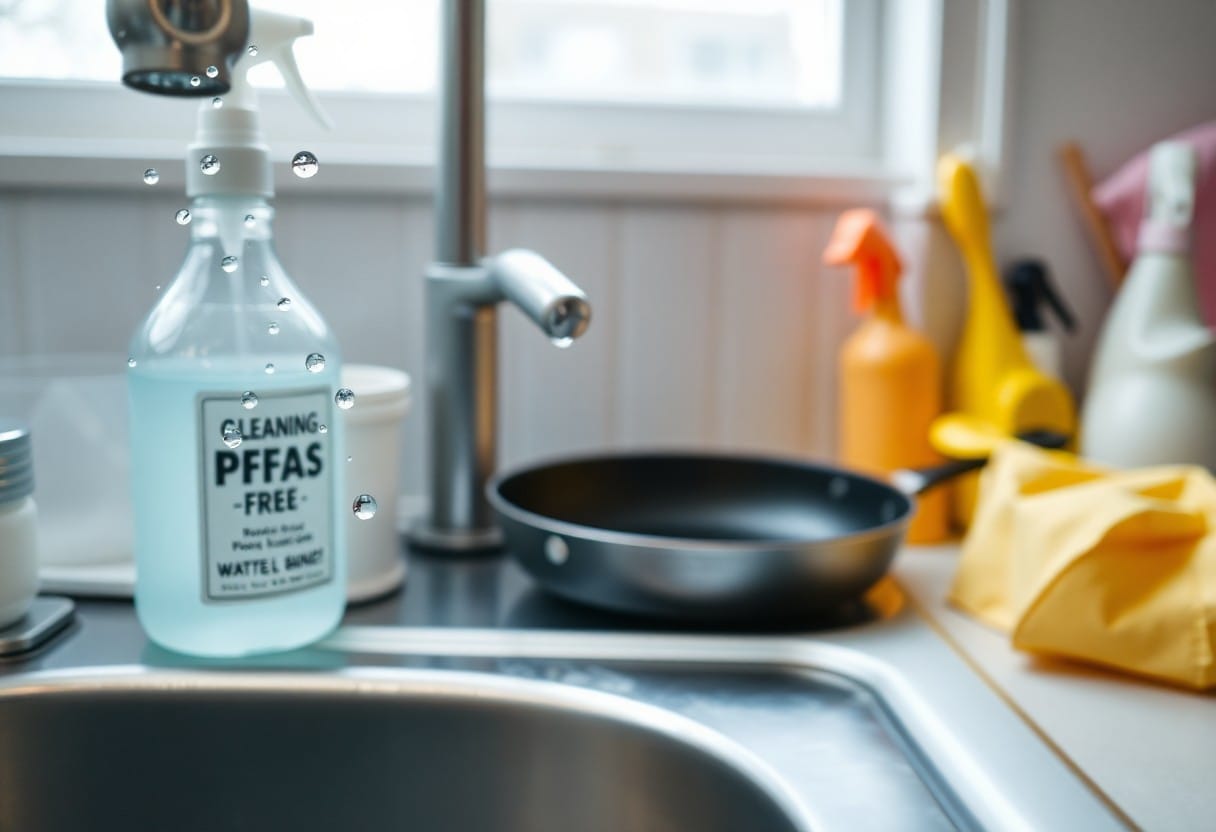With increasing concern over PFAS chemicals in drinking water, it’s important for you to understand the potential risks to your health and how to address this issue. PFAS, often referred to as “forever chemicals,” can accumulate in your body and the environment, leading to serious health problems. You have options to safeguard your health, including testing your tap water, using proper filtration systems, or seeking alternative water sources. This post will guide you through effective steps you can take to protect yourself and your family from exposure.
Understanding PFAS Chemicals
For many households, the presence of PFAS chemicals in tap water can be unsettling. These synthetic compounds, often referred to as “forever chemicals,” are persistent in the environment and your body, making them difficult to eliminate. Understanding PFAS, their sources, and how they work is necessary for taking appropriate action to safeguard your health.
What Are PFAS?
Against the backdrop of chemical safety, PFAS (per- and polyfluoroalkyl substances) are a group of man-made chemicals widely used in products for their water- and grease-resistant properties. Commonly found in non-stick cookware, stain-resistant fabrics, and food packaging, they have raised concerns due to their adverse effects on health and the environment.
Health Risks Associated with PFAS
One of the significant challenges posed by PFAS chemicals is their potential health risks. Research has shown these substances can lead to various health issues, including immune system dysfunction, hormonal disruptions, and even increased risks of certain cancers. Long-term exposure may also impact your liver and cholesterol levels, making it necessary to be aware of these dangers to protect your health.
Understanding the health risks associated with PFAS is vital for you and your loved ones. Studies indicate that exposure to these chemicals can result in serious conditions, such as thyroid disease and reproductive issues, affecting both men and women. Being informed about the potential dangers can empower you to take steps to avoid further exposure and seek solutions for your water quality issues.
Testing Your Tap Water
Assuming you are concerned about PFAS chemicals in your tap water, conducting a water test is a vital step. Testing can determine the presence and levels of PFAS, helping you understand potential risks to your health and safety. Many local health departments and environmental agencies provide resources for testing, or you can opt for home test kits that offer a convenient solution. Regular monitoring is key to staying informed about your water quality.
How to Test for PFAS
Below are various methods to test for PFAS in your tap water. You can contact your local water utility for any available reports or data on PFAS levels. If you prefer an independent approach, consider purchasing a certified laboratory water testing kit or an at-home test kit that specifically targets PFAS compounds. Ensure that the testing method you select is validated and follows appropriate guidelines to yield reliable results.
Interpreting Your Water Test Results
Your water test results may present levels of PFAS, expressed in parts per trillion (ppt). Understanding these results is fundamental in making informed choices. If PFAS concentrations exceed 70 ppt, which is the EPA’s advisory level for combined PFAS, it’s important to take action to protect your health.
Interpreting your water test results requires careful attention to the numbers reported. A reading below PFAS detection limits suggests low risk, while levels above 70 ppt indicate that you should consider alternatives like using filtered water, bottled water, or an alternative water supply. Additionally, knowing which specific PFAS compounds are present can help guide your decisions regarding water treatment options. Always consult local health officials or a water quality expert for further guidance based on your specific test results.
Mitigation Strategies
There’s a range of effective strategies you can adopt to reduce your exposure to PFAS chemicals in your tap water. Implementing water filtration systems, opting for alternative water sources, and becoming informed about local water quality can significantly minimize your risk. Each approach has its own merits and can help ensure that you and your family are protected from harmful PFAS exposure.
Water Filtration Systems
Mitigation of PFAS in your drinking water can be achieved through advanced water filtration systems. These systems, specifically designed to target PFAS compounds, utilize technologies such as activated carbon filters and reverse osmosis to effectively remove contaminants. When opting for a system, ensure it is certified to reduce PFAS levels in your water for optimal safety.
Alternative Water Sources
By exploring alternative water sources, you can further safeguard against PFAS. Options such as bottled water or water delivery services might be viable solutions while you address your tap water situation. Always choose brands that provide transparent testing results, ensuring their water is free of PFAS and other harmful substances.
With many bottled water options available, selecting the right source is crucial for your health. Look for brands that specifically advertise PFAS-free water or conduct regular independent testing to assure quality. While bottled water can serve as a temporary fix, weigh the long-term impacts on both your wallet and the environment. Consider larger, sustainable water delivery services that reduce plastic waste while providing clean, safe drinking water for you and your family.

Legal and Regulatory Framework
Unlike many other contaminants, PFAS chemicals are subject to a complex legal and regulatory framework that varies by location. As understanding of the risks posed by these substances has grown, federal and state agencies have begun to implement measures aimed at managing and reducing PFAS exposure in drinking water. It’s vital for you to stay informed about the specific regulations that apply to your area, as they can greatly affect your rights and actions regarding contaminated tap water.
Current Regulations on PFAS
By now, regulatory bodies are recognizing the need for guidelines on PFAS, although these regulations can differ significantly across states. Some states have established their own limits for PFAS in drinking water, while the Environmental Protection Agency (EPA) is working toward finalizing national standards. You should check local regulations to understand permissible levels of PFAS and advocate for stricter protections if they are inadequate.
Reporting and Compliance
Regulatory agencies require water utilities to monitor, report, and comply with regulations concerning PFAS levels in tap water. This means that if PFAS are detected above established limits, water providers must inform the public and take appropriate measures to mitigate contamination. You can review your water utility’s annual consumer confidence report to stay aware of the contamination level in your supply.
In fact, compliance with PFAS regulations is vital for ensuring safe drinking water. Water utilities must conduct regular testing and report their findings, but in some cases, failure to comply can result in legal repercussions. Having accurate information empowers you to demand accountability from your water provider, ensuring that action is taken if PFAS levels exceed safe limits. By staying informed, you can actively participate in advocacy for better regulations and standards, contributing to the safeguard of your community’s health.
Community Actions
Your involvement in community actions is important for addressing PFAS contamination. By joining together with your neighbors, you can raise awareness about the dangers of these chemicals and push for solutions that protect your drinking water. Engaging with local and state officials about the importance of cleaner water can lead to better regulations and remediation efforts.
Advocating for Clean Water
Against the backdrop of rising PFAS contamination, advocating for clean water is vital for safeguarding your health and that of your community. This could entail contacting your local representatives, attending town hall meetings, or organizing petitions to push for stronger regulations on industrial discharges and improved water testing practices.
Joining Local Initiatives
Among many ways to make a difference, joining local initiatives can amplify your impact on addressing PFAS issues. You can participate in grassroots organizations focused on environmental health, get involved with community clean-up events, or take part in educational workshops and campaigns that emphasize the risks associated with PFAS contamination.
Community initiatives often mobilize collective action, encouraging participation in efforts that combat PFAS pollution. These groups might organize educational seminars, informational campaigns, and community forums that foster dialogue and action. By joining such initiatives, you become a part of a supportive network, helping to push for effective changes that advocate not just for clean water but also for a healthier environment overall.
Resources and Support
Keep in mind that you are not alone in addressing the presence of PFAS chemicals in your tap water. Various organizations and resources are available to provide support, information, and potential solutions tailored to your specific needs. It’s beneficial to explore these options to stay informed and take action.
Organizations for Assistance
Between environmental health organizations, community advocates, and local NGOs, there are numerous groups focused on helping you navigate the challenges presented by PFAS contamination. These organizations offer educational materials, legal support, and community resources, helping you better understand your risks and options.
Government Resources
Between federal, state, and local agencies, numerous government resources exist to assist you in dealing with PFAS contamination in your tap water. These agencies provide access to testing information, guidelines for remediation, and legislation updates pertinent to water safety in your area.
Resources such as the Environmental Protection Agency (EPA) and state environmental agencies publish comprehensive guidelines on PFAS. You can access publicly available data on contamination levels in your area. Additionally, local health departments offer support and educational programs about safe water practices. Engaging with these government resources empowers you to take informed action and advocate for further protections at the local and national levels.
Summing up
Presently, if your tap water contains PFAS chemicals, you can take several actionable steps to ensure your safety. First, consider using a water filter certified to remove PFAS, as these can significantly lower these harmful substances in your drinking water. Additionally, stay informed by checking local water quality reports and engaging with your local government regarding water safety. You might also explore alternative water sources, such as bottled water, and participate in community efforts to address PFAS contamination. Taking these measures can help protect your health and enhance the quality of the water you consume.





















